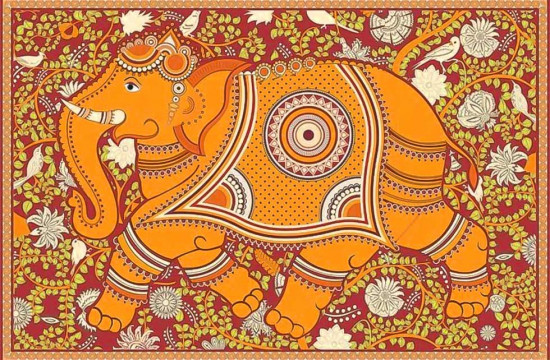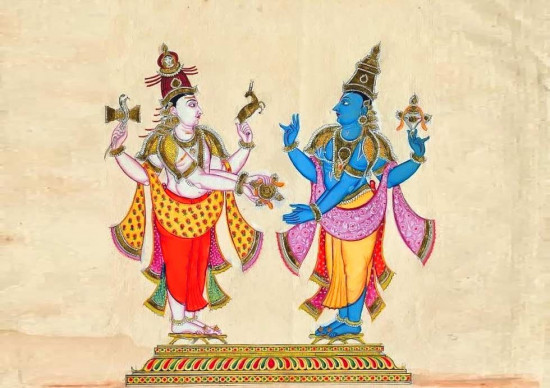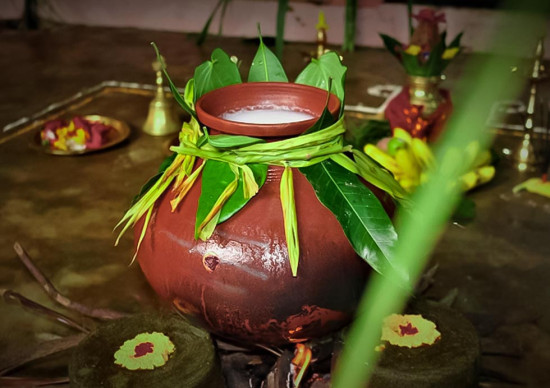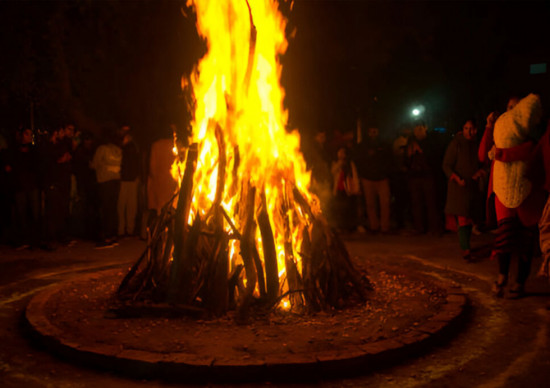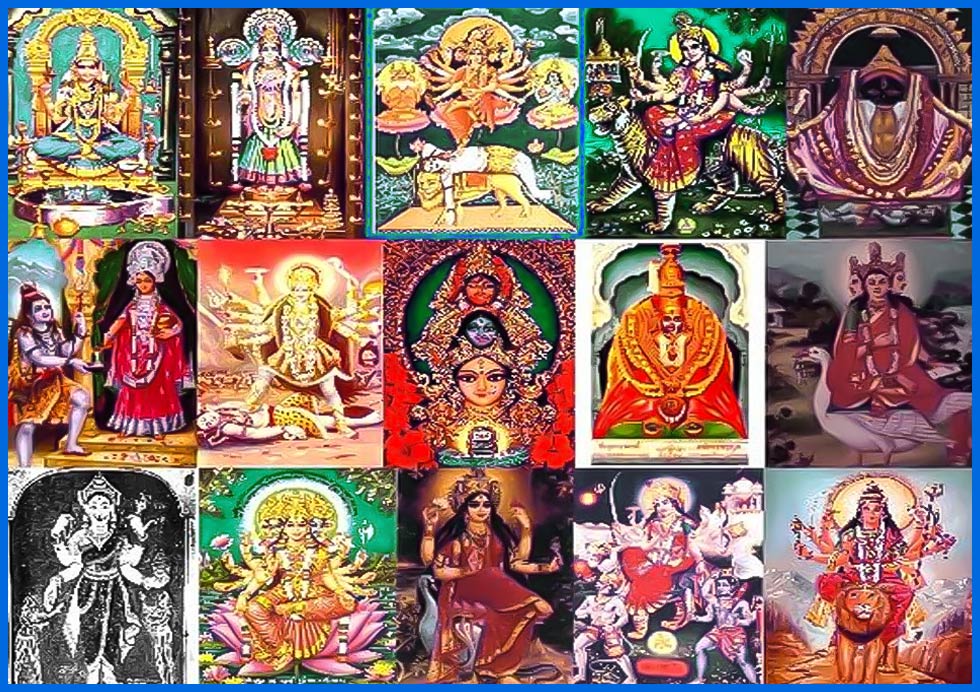
The Brahmanda Purana and the Shakti Peetha Stotra give the names of these holy places. The Mahapeetha Purana offers a different perspective, identifying 52 Shakti Peethas, mostly in the state of Bengal.
Each seat of power is dedicated to a particular aspect or form of the divine feminine, usually associated with a particular god or goddess. These places have great spiritual power and are considered very auspicious for worship and pilgrimage.
The Story of the Shakti Peethas
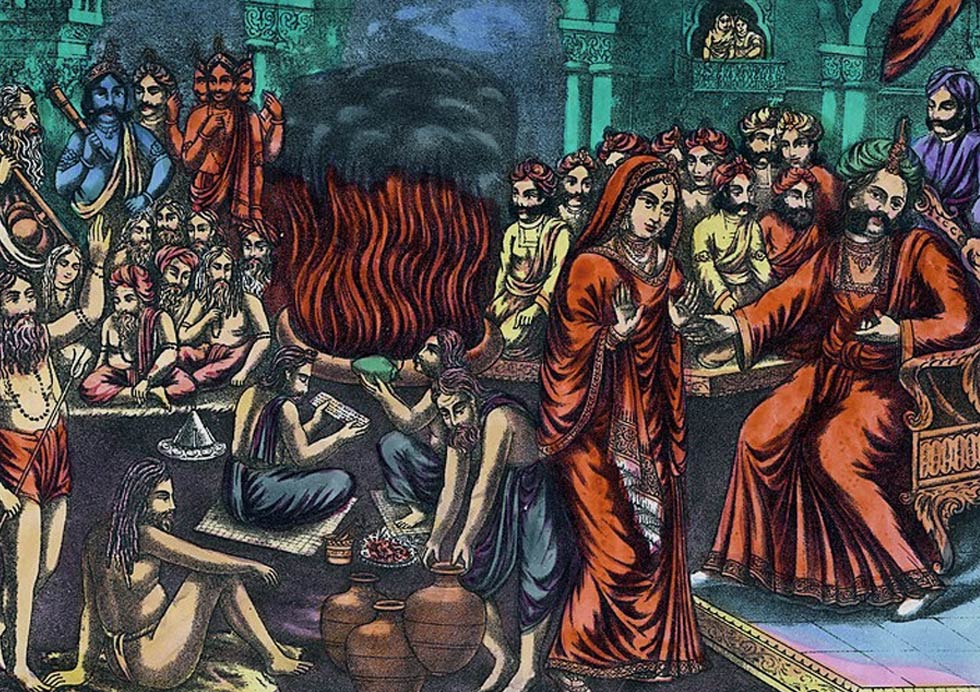
Once Daksha organized a grand yajna (sacrifice) but excluded Sati and Lord Shiva from the invitation. Determined to attend, Sati went against Lord Shiva’s advice. At the yajna, Daksha humiliated her, leading her to self-immolate in protest. This act was both a defiant stand against her father and a demonstration of her loyalty to Lord Shiva.
Devastated by Sati’s death, Lord Shiva performed the fierce Tandava dance, creating chaos and destruction. In his rage, he created two fearsome deities, Virabhadra and Bhadrakali, who wreaked havoc at the yajna and punished Daksha. Ultimately, Lord Shiva restored those who had been slain, replacing Daksha’s severed head with that of a goat.
In his grief, Lord Shiva roamed the universe with Sati’s body, causing cosmic imbalance. To restore order, Lord Vishnu used his Sudarshana Chakra to dismember Sati’s corpse, and the pieces fell to different locations on Earth. These locations became revered as Shakti Peethas, sacred shrines of the Mother Goddess.
Sati was reborn as Parvati, the daughter of Himavat, the king of the mountains, and Mena. Through her penance and devotion, Parvati won Lord Shiva’s heart once more, and they married, bringing balance back to their lives and the universe.
The Significance of the Shakti Peethas
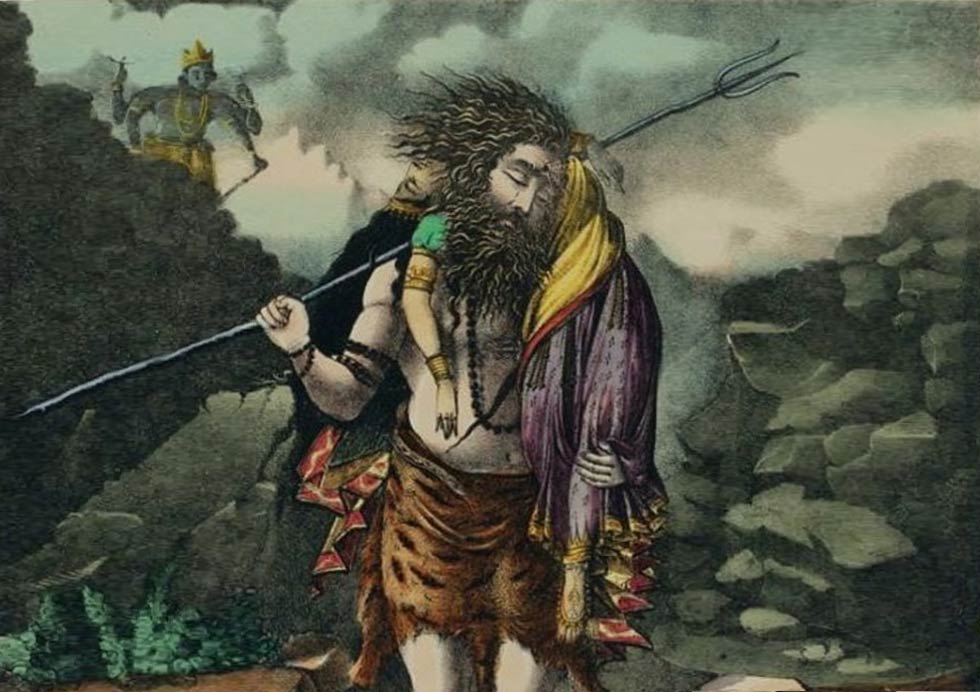
The Shakti Peethas are more than just pilgrimage sites; they represent the power and energy of the Divine Feminine. These sacred places are believed to be sources of spiritual awakening, healing, and protection. Devotees from all walks of life visit these sites to seek blessings, fulfill desires, and connect with the divine.
- Spiritual Awakening: Visiting Shakti Peethas is believed to lead to spiritual awakening and enlightenment. The energy and vibrations emanating from these sites are said to have a transformative effect on the mind and soul.
- Healing and Purification: The Shakti Peethas are considered to have healing properties. Devotees often visit these sites to seek relief from physical ailments, emotional distress, and spiritual turmoil.
- Fulfillment of Desires: Many people visit Shakti Peethas with specific prayers and wishes. It is believed that worshiping at these sacred sites can help fulfill desires and grant blessings.
- Protection and Blessings: The Shakti Peethas are associated with the Divine Feminine, who is often seen as a nurturing and protective force. Devotees seek the blessings of the goddess to protect themselves from harm and ensure prosperity.
List of 18 Astadasha Maha Shakti Peethas in India
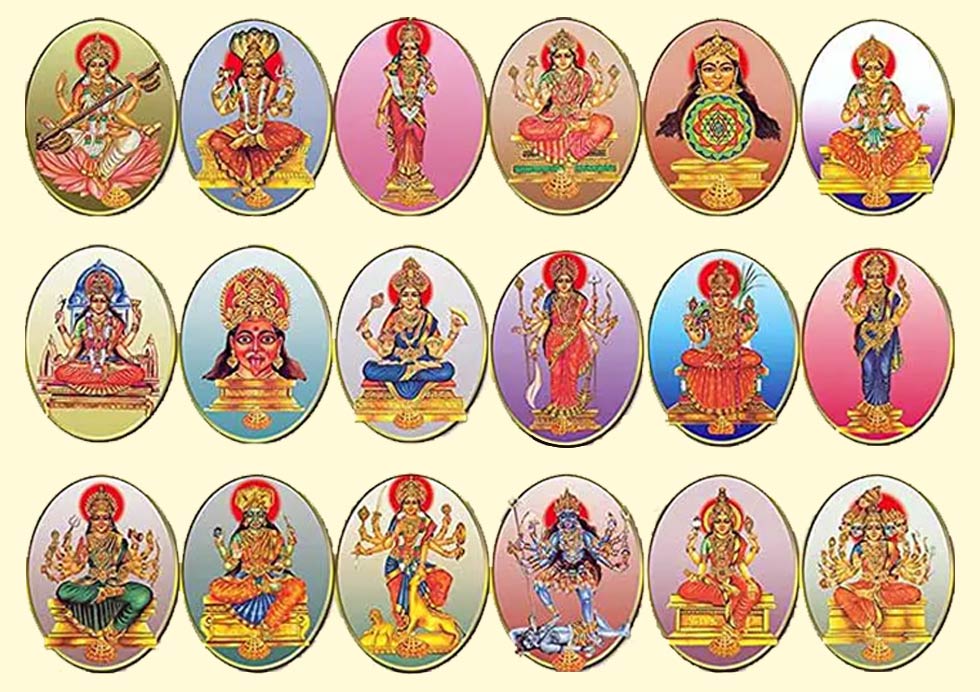
There are believed to be 64 locations associated with the Shakti Peethas, but Adi Shankara's Asta Dasha Shakti Pitha Stotram specifically mentions 18 shakti peethas locations known as the Maha Shakti Peethas. Among these, Kamakhya, Gaya, and Ujjain are regarded as the most sacred, representing the three essential aspects of the Mother Goddess: Creation (Kamarupa Devi), Nourishment (Sarvamangala Devi/Mangalagauri), and Annihilation (Mahakali Devi).
- The Shankari Devi Temple, located in Trincomalee (Thirukonamalai) in Sri Lanka, is one of 18 shakti peethas known as Shankari Pitham. Here, the part of the goddess's body that is believed to have fallen is the groin, and the deity worshiped is Goddess Shankari.
- In Kanchipuram, Tamil Nadu, the Kamakshi Amman Temple is renowned as Kamakoti Pitham. This site is associated with the navel of the goddess, and devotees revere Goddess Kamakshi here.
- The Shrinkala Temple in Pradmunyee (Pandua), West Bengal, is known as Bhavatārini Pitham. The part of the goddess's body that is said to have fallen here is part of the stomach, and the worshiped deity is Goddess Shrinkhala.
- The Chamundeshwari Temple in Mysuru, Karnataka, is called Krouncha Pitham. The temple is linked to the hair of the goddess, and Goddess Chamundeshwari is the presiding deity.
- Jogulamba Devi, situated in Alampuram, Telangana, is revered as Yogini Pitham. This site is associated with the teeth of the goddess, and the deity worshiped is Goddess Jogulamba (Yogamba Thalli).
- In Srisailam, Andhra Pradesh, the Bhramaramba Mallikarjuna Temple is known as Srisaila Pitham. The temple is linked to the neck of the goddess, and the deity here is Goddess Bhramarambika.
- The Mahalakshmi Temple in Kolhapur, Maharashtra, is known as Shri Pitham. Here, the eye of the goddess is believed to have fallen, and the worshiped deity is Goddess Mahalakshmi (Aai Ambabai Devi).
- Located in Mahur, Maharashtra, the Renuka Temple is called Moola Pitham. This site is associated with the left hand of the goddess, and the deity worshiped is Goddess Renuka.
- The Mahakaleswar Temple in Ujjain, Madhya Pradesh, is known as Ujjaini Pitham. The upper lip of the goddess is said to have fallen here, and Goddess Mahakali is the presiding deity.
- The Kukkuteswara Swamy Temple in Pithapuram, Andhra Pradesh, is revered as Pushkarini Pitham. The back of the goddess is associated with this site, and Goddess Puruhutika is worshiped here.
- In Jajpur, Odisha, the Biraja Temple is known as Oddyana Pitham. The part of the abdomen of the goddess is believed to have fallen here, and the deity is Goddess Biraja.
- The Bhimeswara Temple in Draksharamam, Andhra Pradesh, is known as Daksharama Pitham. The left cheek of the goddess is linked to this site, and Goddess Manikyamba is worshiped here.
- The Kamakhya Temple in Guwahati, Assam, is revered as Kamarupa Pitham. This site is associated with the genitals of the goddess, and the deity worshiped is Goddess Kamakhya.
- Alopi Devi Mandir in Prayagraj, Uttar Pradesh, is known as Prayaga Pitham. The fingers of the goddess are believed to have fallen here, and Goddess Madhaveshwari is the worshiped deity.
- The Jwalamukhi Temple in Jwalamukhi, Himachal Pradesh, is called Jwalamukhi Pitham. This site is associated with the head of the goddess, and Goddess Jwalamukhi is the presiding deity.
- The Mangla Gauri Temple in Gaya, Bihar, is known as Gaya Pitham. The breast of the goddess is believed to have fallen here, and the deity worshiped is Goddess Sarvamangala.
- In Varanasi, Uttar Pradesh, the Vishalakshi Temple is revered as Varanasi Pitham. This site is associated with the nose of the goddess, and Goddess Vishalakshi is worshiped here.
- Lastly, Sharada Peeth in Sharda, Kashmir (Pakistan-Occupied Kashmir), is known as Sharada Pitham. The right hand of the goddess is believed to have fallen here, and Goddess Sharada is the deity worshiped.
All The 52 Shakti Peethas
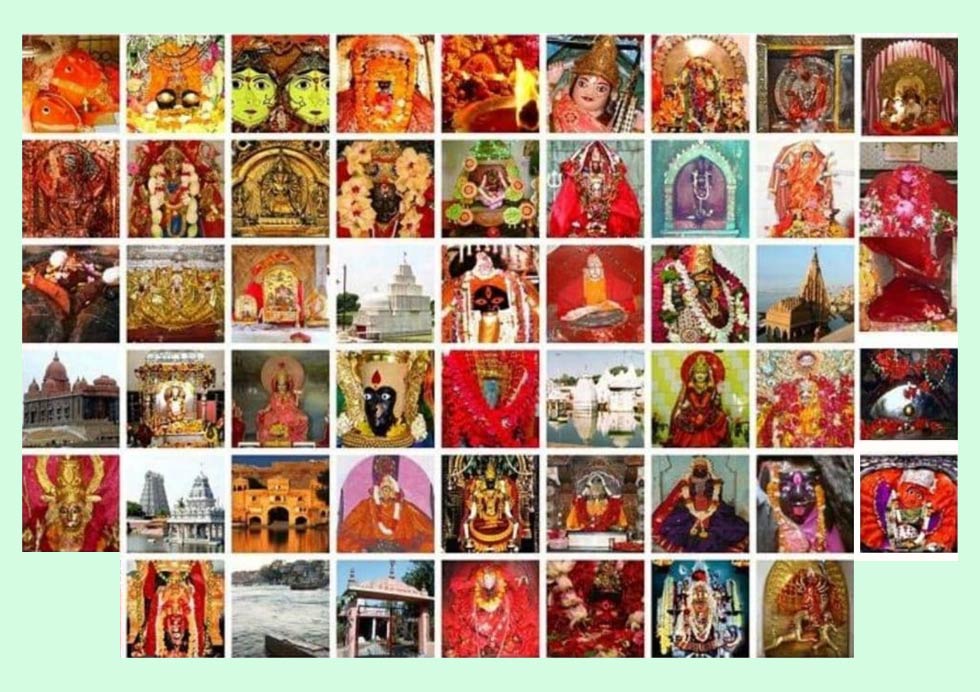
Eastern India
- Kamakhya Temple, Assam: Dedicated to Kamakhya, a form of the goddess Kali.
- Dakshineswar Temple, West Bengal: Home to the famous Kali temple where Sri Ramakrishna Paramahansa lived and preached.
- Tarakeshwar Temple, West Bengal: Dedicated to Lord Shiva, but also considered a Shakti Peetha due to its association with the goddess Tara.
- Kalighat Temple, Kolkata: Dedicated to Kali, the goddess of destruction and rebirth.
- Birla Temple, Kolkata: While primarily dedicated to Lord Vishnu, the temple also houses a shrine to Goddess Lakshmi, a form of Shakti.
- Jajpur, Odisha: Associated with the goddess Bhagavati.
- Bhubaneswar, Odisha: Houses several Shakti Peethas, including the Kedar Gauri temple.
- Chengannur, Kerala: Home to the Chengannur Mahadeva Temple, also associated with the goddess Shakti.
Northern India
- Vaishno Devi Shrine, Jammu and Kashmir: Dedicated to Vaishno Devi, a manifestation of the goddess Shakti.
- Amarnath Cave, Jammu and Kashmir: A natural ice stalagmite, believed to be a manifestation of Shiva's lingam.
- Ujjain Mahakaleshwar Temple, Madhya Pradesh: While primarily dedicated to Lord Shiva, the temple also houses a shrine to Goddess Parvati, a form of Shakti.
- Chittorgarh Fort, Rajasthan: Home to several temples, including the Goddess Kalika temple.
- Jwalamukhi Temple, Himachal Pradesh: Dedicated to the goddess Jwalamukhi, who manifests as eternal flames.
- Siddheshwari Temple, Delhi: An important Shakti Peetha associated with Goddess Siddheshwari.
- Khadakwasla, Maharashtra: Associated with Goddess Siddheshwari.
- Kolaramma Temple, Karnataka: Dedicated to Kolaramma, a local form of Shakti.
Southern India
- Madurai Meenakshi Amman Temple, Tamil Nadu: Dedicated to Goddess Meenakshi, a form of Parvati.
- Kanchipuram Kamakshi Temple, Tamil Nadu: Dedicated to Kamakshi, another form of Parvati.
- Srirangam Ranganathaswamy Temple, Tamil Nadu: While primarily dedicated to Lord Vishnu, the temple also houses a shrine to Goddess Lakshmi.
- Tirupati Tirumala Venkateswara Temple, Andhra Pradesh: Dedicated to Lord Venkateswara, a form of Vishnu, but also considered a Shakti Peetha due to its association with Goddess Padmavati.
- Sabarimala Temple, Kerala: Dedicated to Lord Ayyappan, but also considered a Shakti Peetha due to its association with Goddess Devi.
- Chidambaram Temple, Tamil Nadu: Associated with the goddess Shakti.
- Thanjavur Brihadeeswarar Temple, Tamil Nadu: Contains elements related to Goddess Shakti.
- Tiruchendur Murugan Temple, Tamil Nadu: Associated with goddess Shakti.
Other Regions
- Manikaran Gurudwara, Himachal Pradesh: While primarily a Sikh shrine, it is also considered a Shakti Peetha due to its hot springs.
- Hampi, Karnataka: A UNESCO World Heritage Site with several temples, including Virupaksha Temple, which is considered a Shakti Peetha.
- Kailasa Temple, Maharashtra: Known for its association with goddess Shakti.
- Kundeshwari Temple, Uttarakhand: Associated with goddess Shakti.
- Mysore Temple, Karnataka: Contains aspects related to goddess Shakti.
- Brahmeshwar Temple, Odisha: Associated with goddess Shakti.
- Kalapathar Temple, West Bengal: Associated with the goddess Shakti.
- Puri Jagannath Temple, Odisha: Contains elements related to Goddess Shakti.
- Kali Mandir, Kolkata, West Bengal: Dedicated to Goddess Kali.
- Gokarna, Karnataka: Known for its associations with the goddess Shakti.
- Ratangarh Temple, Gujarat: Associated with goddess Shakti.
- Tirumala, Andhra Pradesh: Houses aspects related to Goddess Shakti.
- Narmada Temples, Madhya Pradesh: Associated with goddess Shakti.
- Hemis Monastery, Ladakh: Contains elements of goddess Shakti.
- Basantpur, Uttar Pradesh: Associated with goddess Shakti.
- Siddhidatri Temple, Uttarakhand: Dedicated to goddess Shakti.
- Saptashrungi Temple, Maharashtra: Known for its association with goddess Shakti.
- Sati Peeth, Gujarat: Associated with goddess Shakti.
- Kaviyoor, Kerala: Known for its association with goddess Shakti.
- Sri Rajarajeshwari Temple, Karnataka: Dedicated to goddess Shakti.
- Kamakhya Devi Temple, Assam: Known for its association with goddess Shakti.
- Ashta Vimal Temple, Maharashtra: Associated with goddess Shakti.
- Baitarani Temple, Odisha: Contains elements related to goddess Shakti.
- Kali Temple, Delhi: Dedicated to Goddess Kali.
- Shivani Temple, Maharashtra: Associated with goddess Shakti.
- Vishalakshi Temple, Varanasi, Uttar Pradesh: Dedicated to Goddess Vishalakshi.
- Mahakali Temple, Mumbai, Maharashtra: Known for its association with goddess Shakti.
- Sati Peeth – Gujarat: Associated with the goddess Shakti.
- Puja: The most common ritual is puja, which involves offering prayers, flowers, fruits, and other items to the deity.
- Abhisheka: This involves pouring sacred water or milk over the deity's idol.
- Aarti: Aarti is a ritual involving waving lighted lamps or incense sticks in front of the deity.
- Bhajan and Kirtan: Devotional songs and hymns are often sung at Shakti Peethas.
- Yagnas: Yajnas are elaborate sacrificial rituals that are sometimes performed at Shakti Peethas.
Beliefs Associated with Shakti Peethas
- Spiritual Awakening: Visiting Shakti Peethas is believed to lead to spiritual awakening and enlightenment.
- Removal of Obstacles: It is believed that worshiping at these sites can help remove obstacles and fulfill desires.
- Healing and Purification: Shakti Peethas are considered to have healing properties and can purify the mind and soul.
- Divine Blessings: Worshiping at these sites is believed to invoke the blessings of the Divine Feminine and grant protection.


